2018 Robot Roundup
Article By : Cabe Atwell
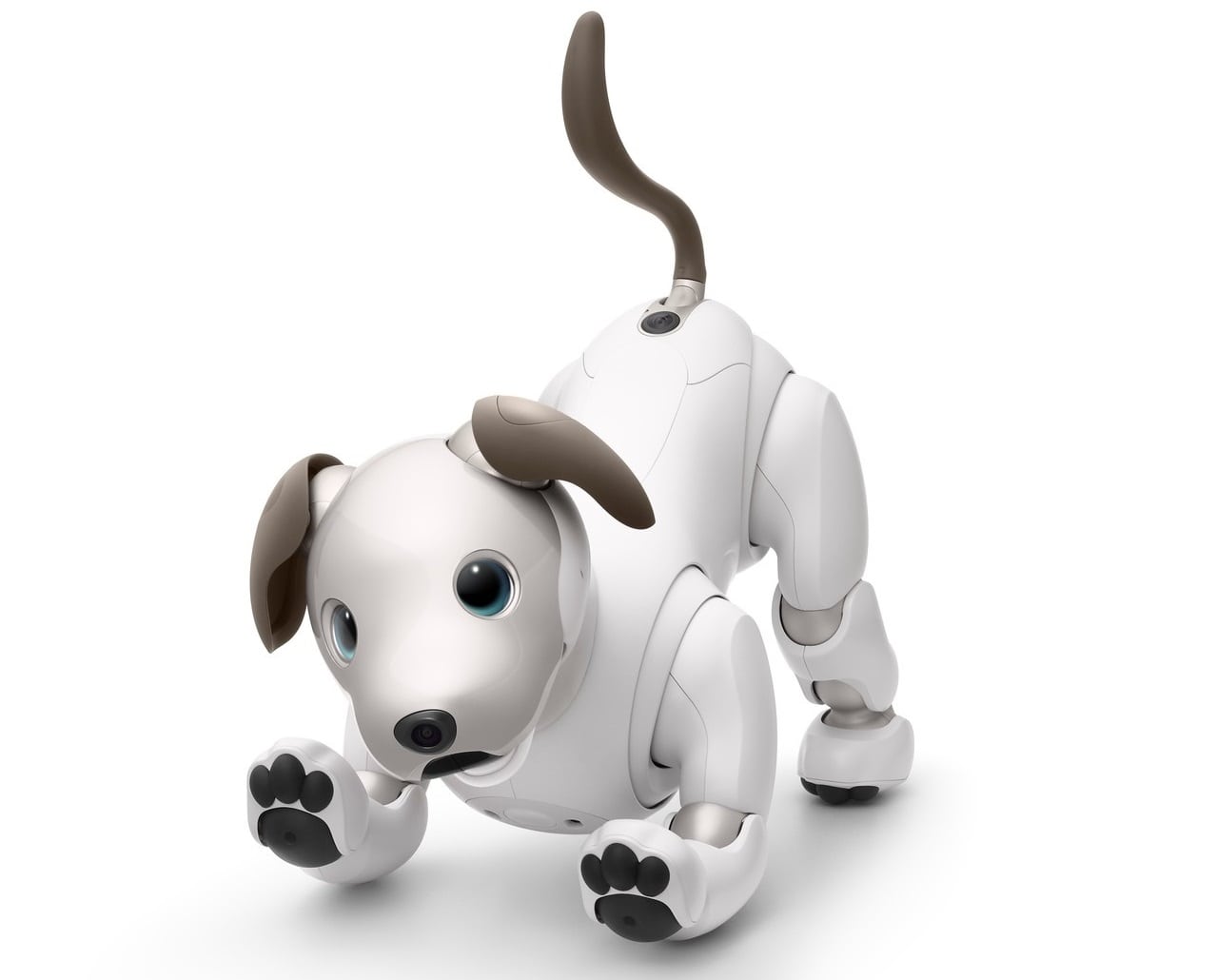
We list the top 10 robots of the year
Robotics and robotic developments had a banner year in 2018 ─ domestic, industrial, medical, bio, and toy industries have all made significant advancements in their respective fields with new machines and advanced AI. That’s not to say there hasn’t been some sad news for this year, as Rethink Robotics of Baxter fame, have shuttered their doors due to poor sales, the same with social robot Jibo, who’s company is all but gone, along with Mayfield Robotics’ home assistant Kuri.
As with any technology, when new hardware enters the market, old tech falls by the wayside or becomes revamped into updated revisions, and 2018 has seen some new advancements to transform our lives in a myriad of ways. From home-based assistants to helping save the environment, robots will continue to evolve to take on whatever tasks we assign them. In this roundup, we will take a look at a few new robots and robotic developments that were unveiled over the last year, and what may lie on the horizon.
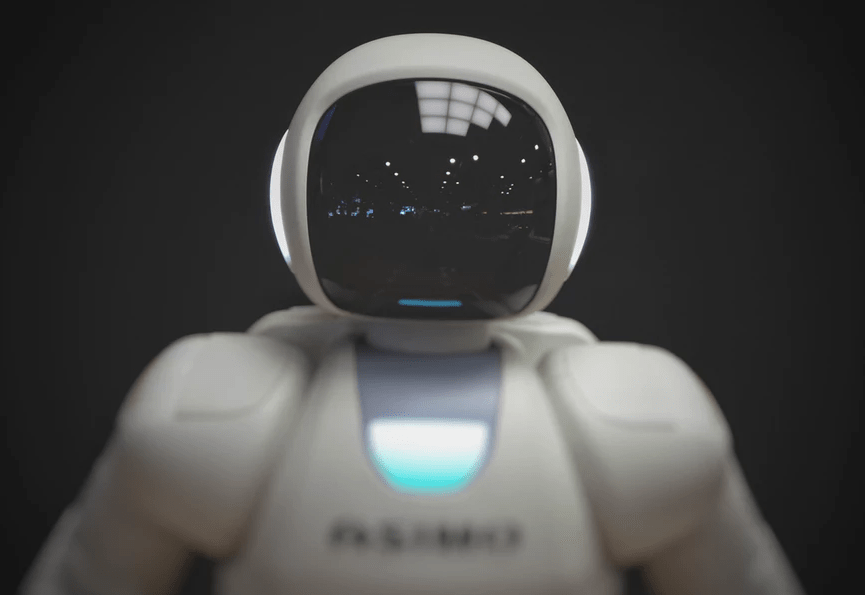
Image credit: Franck V via Unsplash
1: Boston Dynamics’ Atlas Performs Parkour
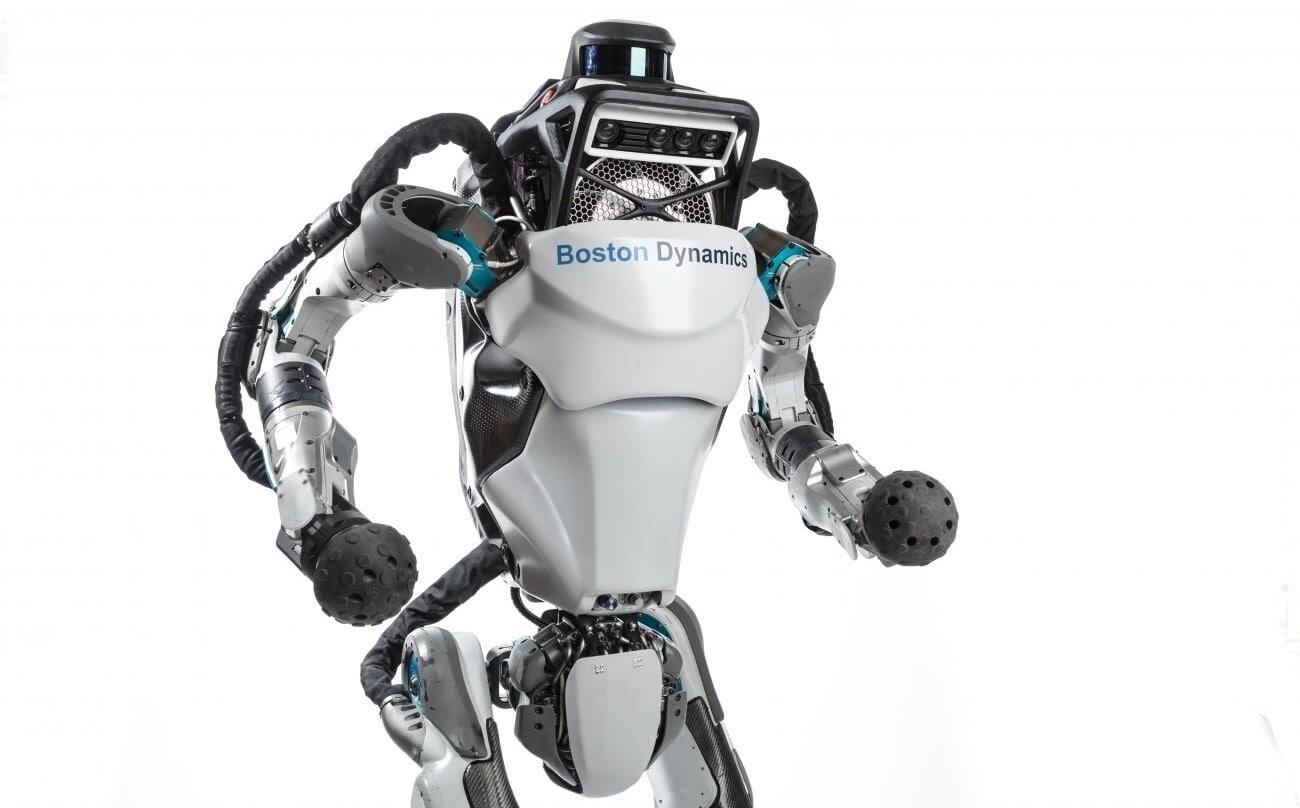
Image credit: Boston Dynamics
Boston Dynamics’ Atlas humanoid robot (based on PETMAN) has come a long way since it was unveiled back in 2013. When the robot debuted, it was being overseen by DARPA, with program manager Gill Pratt comparing it to a 1-year old child stating, “a 1-year-old child can barely walk, a 1-year-old child falls down a lot. As you see these machines and you compare them to science fiction, just keep in mind that this is where we are right now.”
The Atlas has undergone several revisions and upgrades, including being battery powered, sensors that help give it remarkable stability, and LIDAR to help avoid obstacles and navigate the terrain. It can now run, jump over obstacles, and even perform backflips.
2: JAXA’s MINERVA-II Robotic Rover Captures Video from Asteroid Ryugu

Image credit: JAXA
The Japan Aerospace Exploration Agency (JAXA) made headlines a few months ago when their MINERVA-II lander deployed from the unmanned Hayabusa2 spacecraft and set down on the asteroid Ryugu. Once on the surface, a pair of robotic rovers (Rover-1A and 1B) exited the vehicle and managed to take images and video of the asteroid, marking the world’s first moving robotic observation from the surface of an asteroid.
The rovers move by hopping in the asteroid’s low gravitational field, using torque generated by a pair of rotating masses housed inside the vehicle. Each house a stereo camera, wide-angle camera, and thermometers, while solar cells and double-layer capacitors provide their power.
3: Sony’s Limited First Litter Edition Aibo Becomes Available in the U.S.

Image credit: Sony
Sony unveiled the original Aibo robotic pet dog back in 1999 and since gone through four generations with the latest being the ERS-1000. Unlike the previous versions, the most recent comes packed with ultra-compact one and two-axis actuators, giving the robotic pet more natural movements- including tail and ear wagging, mouth and paw motions, among a host of others.
Aibo is equipped with a pair of cameras- a fisheye and SLAM (Simultaneous Localization and Mapping), for navigation and obstacle performance. The cameras, along with the dog’s sensor suite (ToF, ranging, pressure, capacitive, etc.) allow the dog to recognize people’s faces. Deep learning algorithms help the robot identify praise, smiles, and the ability to respond to petting. Aibo just recently became available in the US for $2,899, a great holiday gift for those looking for a pet that doesn’t require too much care.
4: Cornell University Engineers Develop Shape-Shifting Modular Robots that Adapt to their Environment
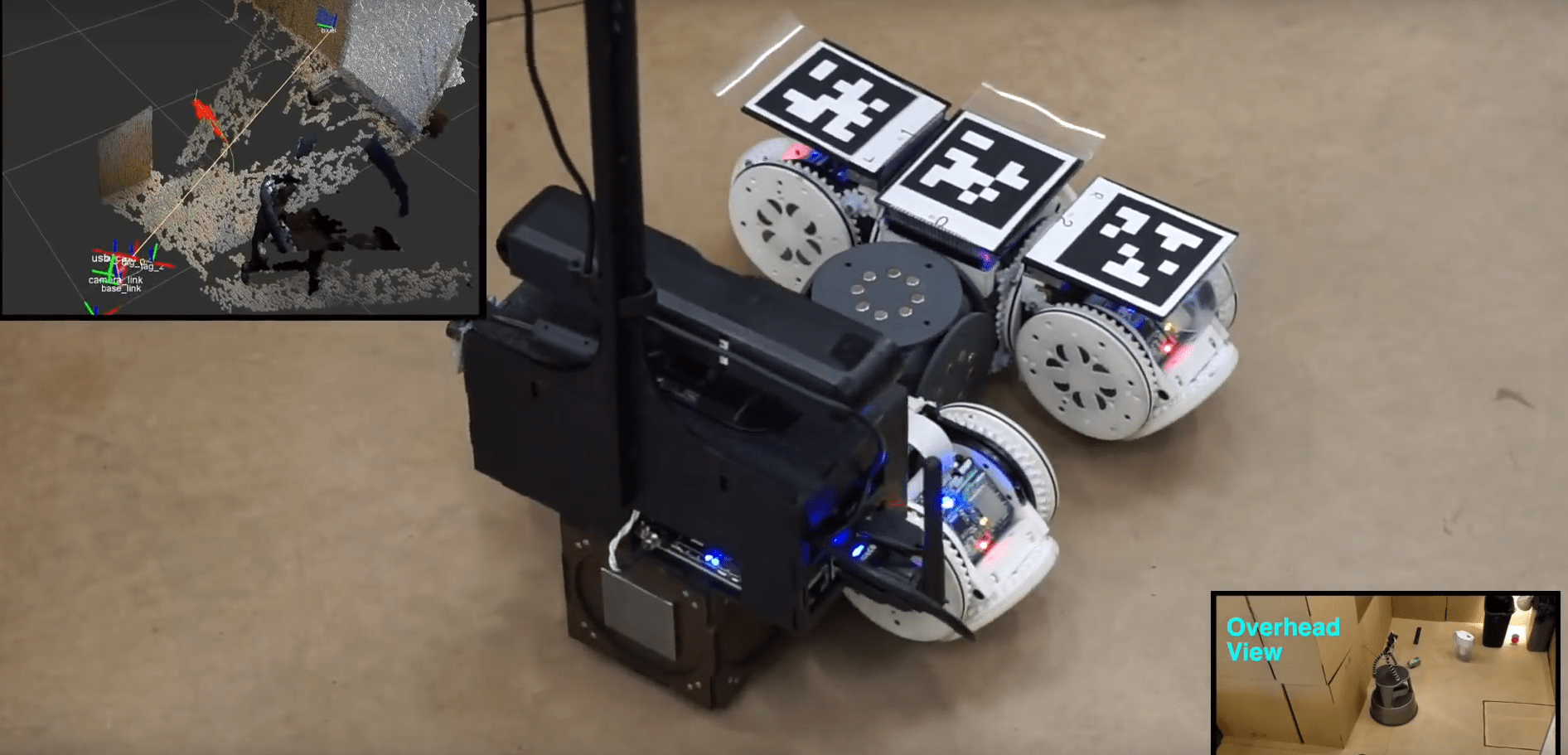
Image credit: Cornell University via YouTube
Cornell University engineers developed shape-shifting autonomous modular robots that can adapt to its surroundings and reconfigure itself based on the task required. The robots are also capable of removing and replacing damaged parts when necessary. The robots feature wheeled and cubed-shaped modules outfitted with magnets, allowing them to attach and detach from each other to reconfigure themselves.
Each module is outfitted with Wi-Fi, allowing them to communicate with one another, and with a centralized system that process data garnered from the robots. The modules are connected to a sensor platform that’s outfitted with cameras and an onboard computer to analyze the robot’s surroundings, giving the robots an overview, allowing them to reconfigure themselves to handle an assigned task.
5: Yale Researchers Develop Robotic Skin That Turns Objects into Robots
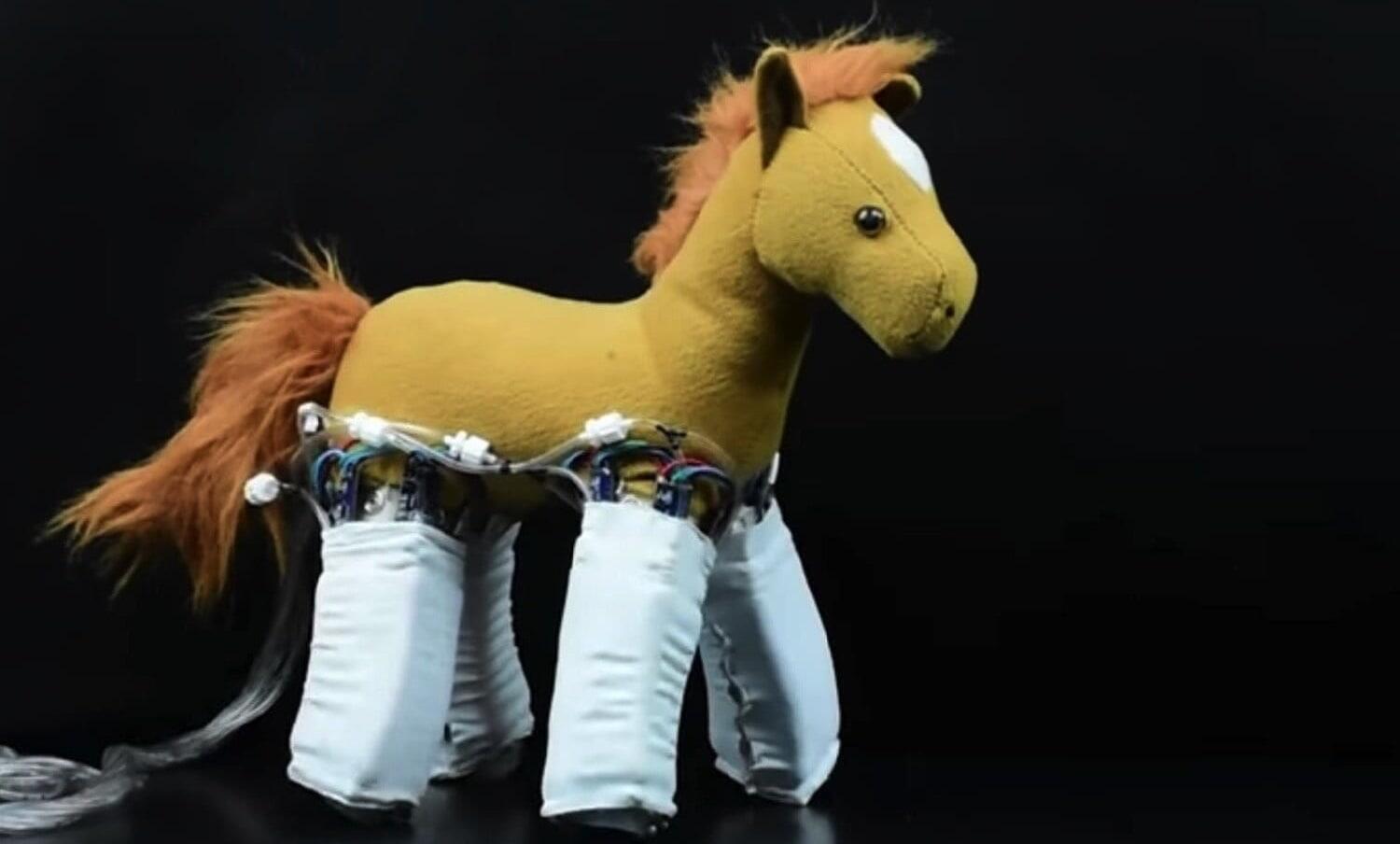
Image credit: Yale via YouTube
Yale researchers have designed a robotic skin (OmniSkins) that is capable of turning inanimate objects into robots using elastic sheets with embedded sensors and actuators. When placed on deformable objects- a stuffed animal, for example, the skin can animate the object and perform various tasks (locomotion, grabbing and moving objects, etc.) depending on the object’s properties.
More than one skin can be used to provide more complex movements and motions, including simultaneous compression and bending that would allow a foam tube to move like an inchworm or even a shirt that can correct poor posture.
6: Sphero’s Bolt Provides STEM Learning Capabilities for Kids of All Ages
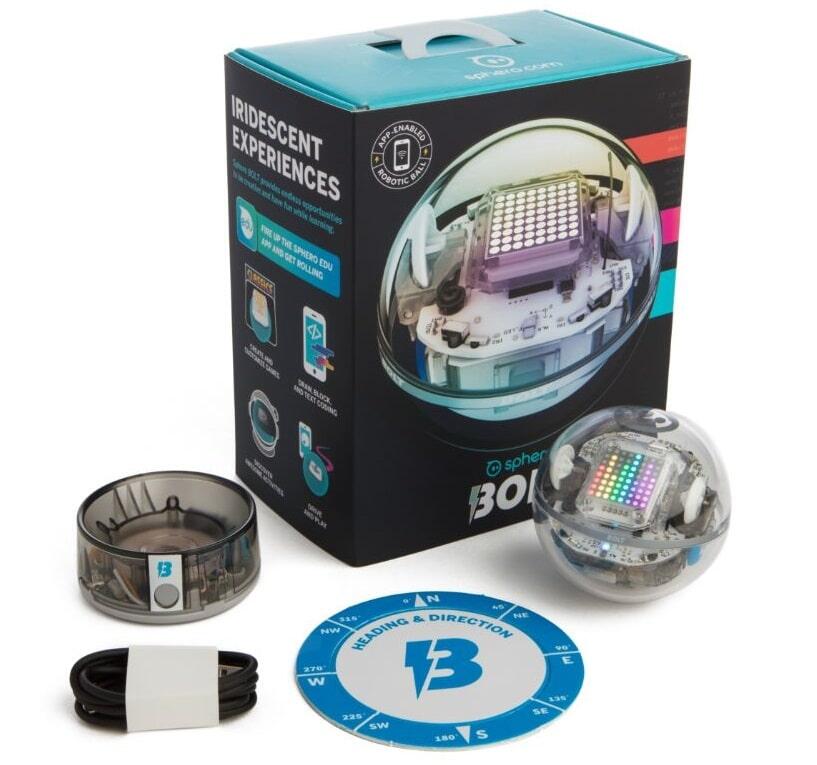
Image credit: Sphero
Sphero jumped on the STEM bandwagon this year with the introduction of the Bolt– a programmable rolling robot with an 8 X 8 LED matrix display, and advanced programmable sensors that allow you to track speed, direction, and acceleration. Users can take advantage of the Sphero EDU platform to program the Bolt for various games, customized text for the matrix display, or even interact with other Bolts using the robot’s integrated IR sensor.
7: WPI’s Hunter, Killer Underwater Autonomous Robot Could Save Ecosystem From Lionfish Invasion
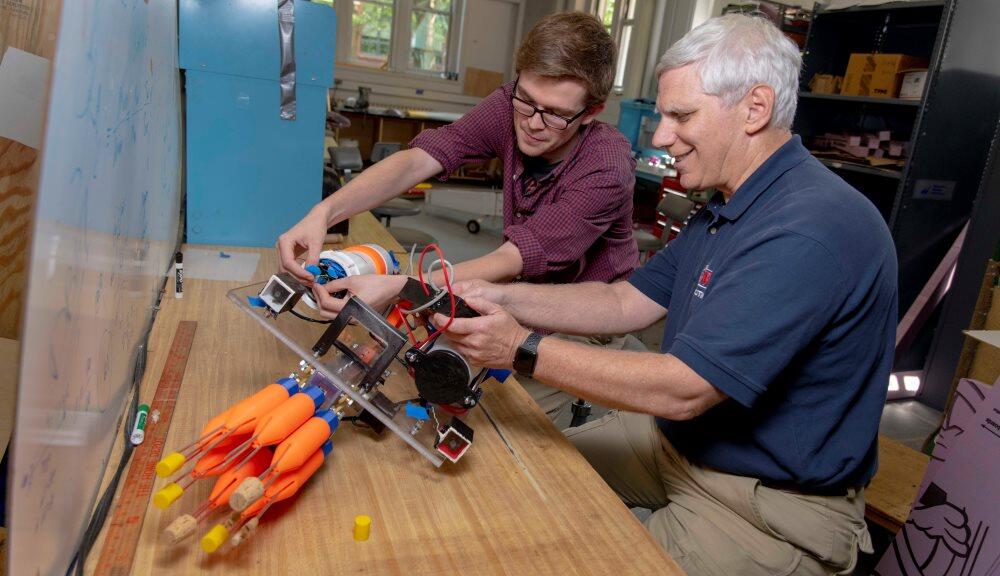
Image credit: Worcester Polytechnic Institute
Students from the Worcester Polytechnic Institute are developing an autonomous undersea hunter/killer robot to actively search out, and eliminate invasive lionfish that are plaguing the Caribbean, threatening the coral and marine ecosystem. The robot is outfitted with a barreled carousal (akin to a revolver) loaded with eight buoyant spears. An onboard camera system actively searches for lionfish in a pre-determined operational area, and once found, launches a spear into the fish, and then rises to the surface to be collected.
The robot utilizes AI, computer vision and machine learning systems to identify friend from foe, which was done using thousands of lionfish images. The students then showed the AI platform thousands of pictures of what it can’t target, primarily divers, along with other aquatic animals. So far, the drone has a greater than 95% accuracy, however, the students hope to improve those numbers before it’s unleashed in the near future.
8: Ben-Gurion University’s RSTAR Robot can Crawl, Climb, and Sprawl over Obstacles
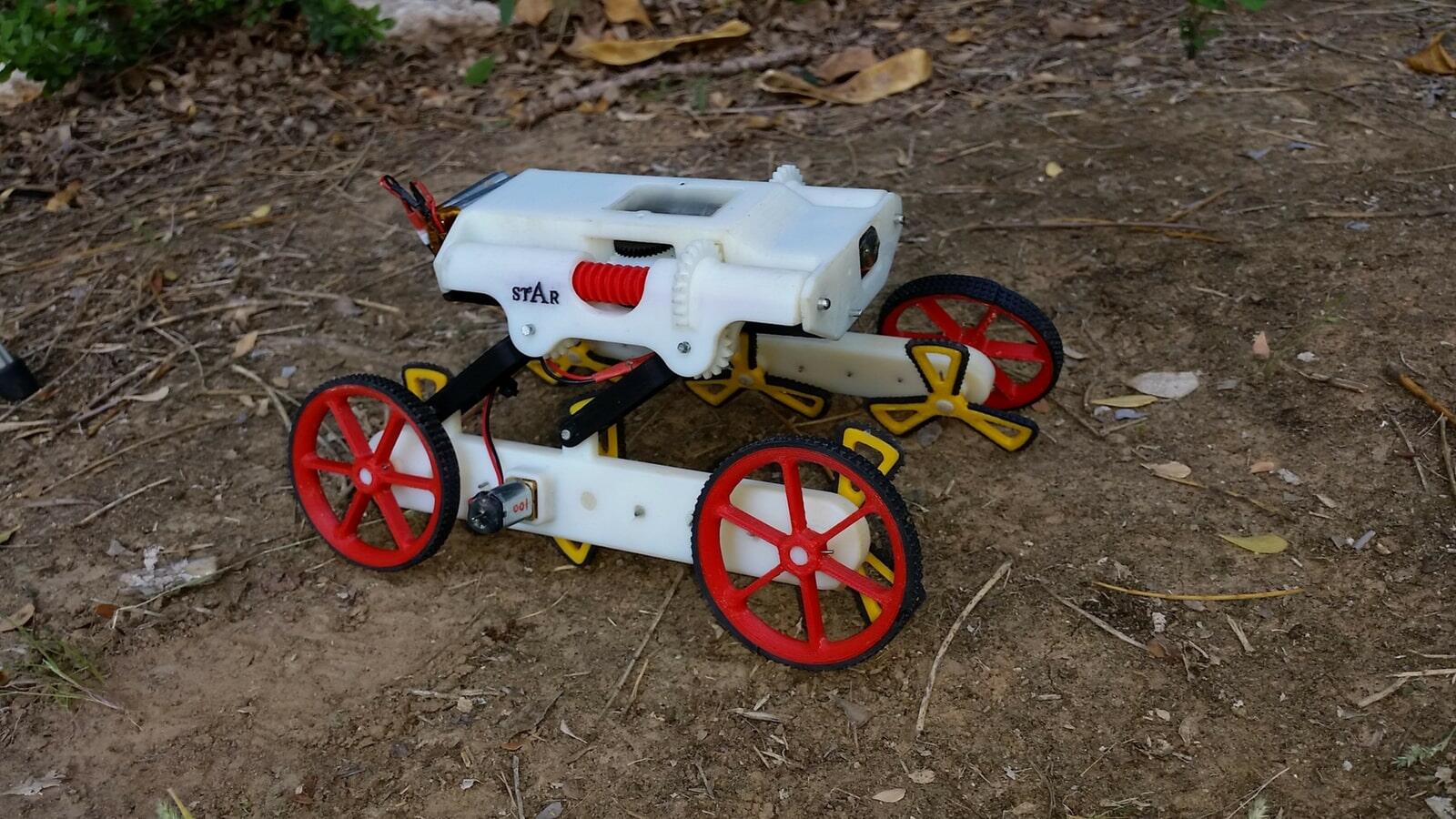
Image credit: Ben-Gurion University of the Negev via YouTube
Researchers from Israel’s Ben-Gurion University of the Negev developed a new robot that can roll, crawl, climb, and sprawl over obstacles to get into tight, confining spaces for tasks such as search and rescue operations. Known as RSTAR (Rising Sprawl-Tuned Autonomous Robot), the robot features round and three-spoked wheels, located on the sides of two arms. When traveling over flat surfaces, it uses the circular set of wheels, however, when it encounters difficult terrain, it flips itself over and uses the spoked, which dig in allowing the robot to crawl or climb.
If the robot encounters unpassable terrain, the robot can splay-out its arms, move its body forward, and then move the arms back into position. What’s more, it can travel up pipes and walls using its spoked wheels to get to areas inaccessible by ordinary robots.
9: Harvard’s Next-Gen Robotic Cockroach can Walk on Water, or Below it
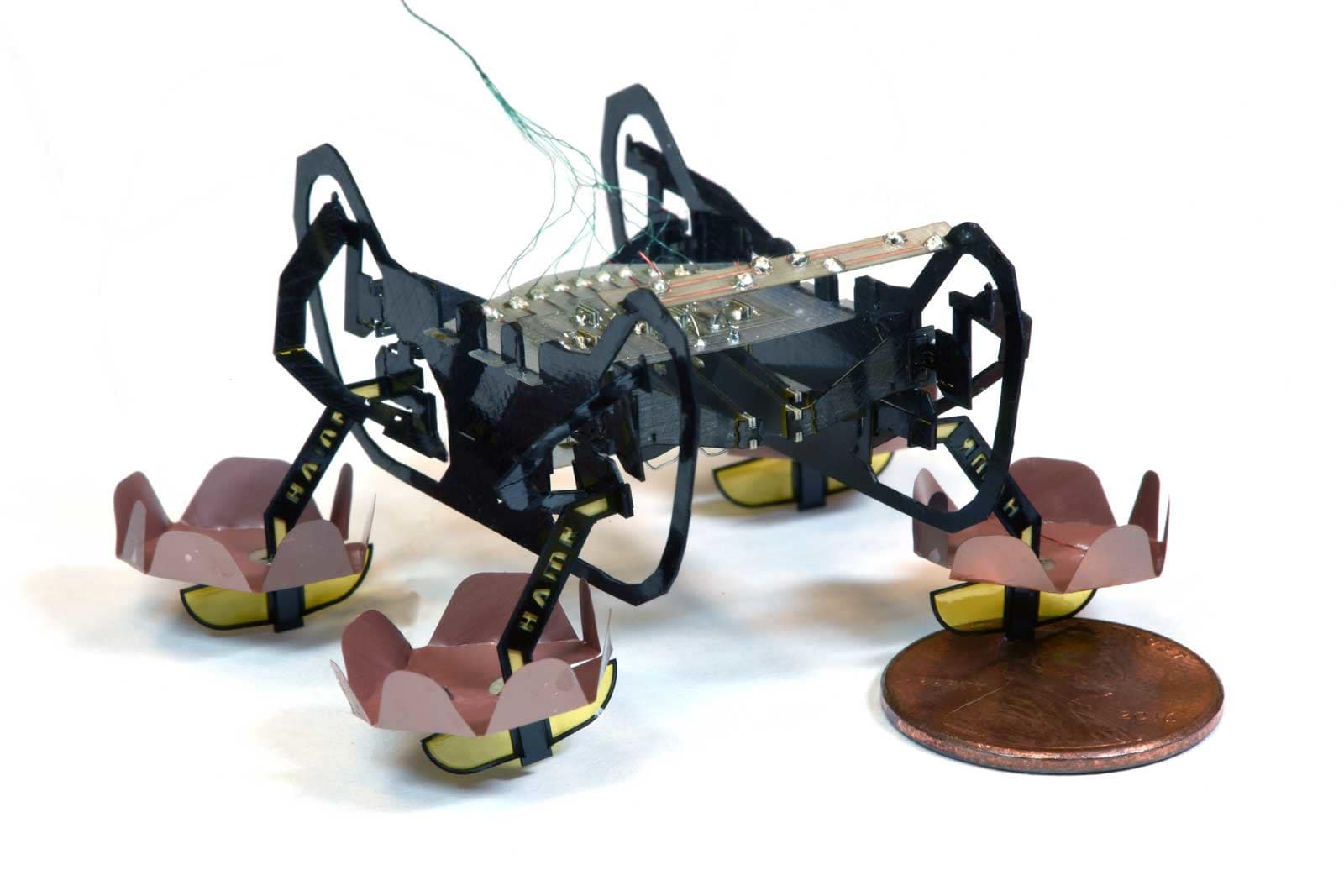
Image credit: Harvard
2018 saw its share of microbots, and Harvard’s latest HAMR (Harvard Ambulatory Microbot) is perhaps the most unusual, as its capable of walking on land, water, and underneath the water, opening up new avenues of exploration. The original HAMR was designed back in 2013 and used 23 microscopic layers of material that are laser cut into specific patterns, such as legs. Each leg (4 total) is outfitted with a pair of tiny actuators, providing it with a tremendous amount of maneuverability.
The latest revision sports foot pads outfitted with flaps on each leg, providing surface tension-buoyancy, allowing it to walk on water. When it wants to walk underneath the water’s surface, it applies a process known as electrowetting, reducing the pads contact angle, allowing the robot to sink. To return to land, it needs a ramp to climb out, which the researchers hope to improve upon for future revisions.
10: AIST’s HRP-5P Construction Robot on Course to fill in for Worker Shortage in Japan

Image credit: AIST
Engineers from Japan’s National Institute of Advanced Industrial Science and Technology (AIST) are developing their HRP-5P robot to help offset a decline in construction workers within the nation. The robot isn’t a ‘jack-of-all-trades,’ but instead handles a few tasks such as hanging drywall or plywood with high accuracy. The robot uses a combination of object and environment detection, along with whole-body motion planning to perform said labor. AIST is hoping to use the robot for heavy tasks, allowing human workers to focus on light, less dangerous work.
These are just a handful of new robots and developments that have been introduced this year, with a host of others developed for a myriad of different industries. Robotics are steadily becoming integrated into our lives- service and maid robots have been here for years, remote robotic surgery is fast becoming a norm for hospitals, and robotic automation is driving manufacturing on an unprecedented rate.
We can expect this trend to continue, and even speed up as new technologies become available. Like it or not, robots will continue to play an integral role in our lives and perhaps become a necessity in much the same way the internet and smart devices have.
Subscribe to Newsletter
Test Qr code text s ss


